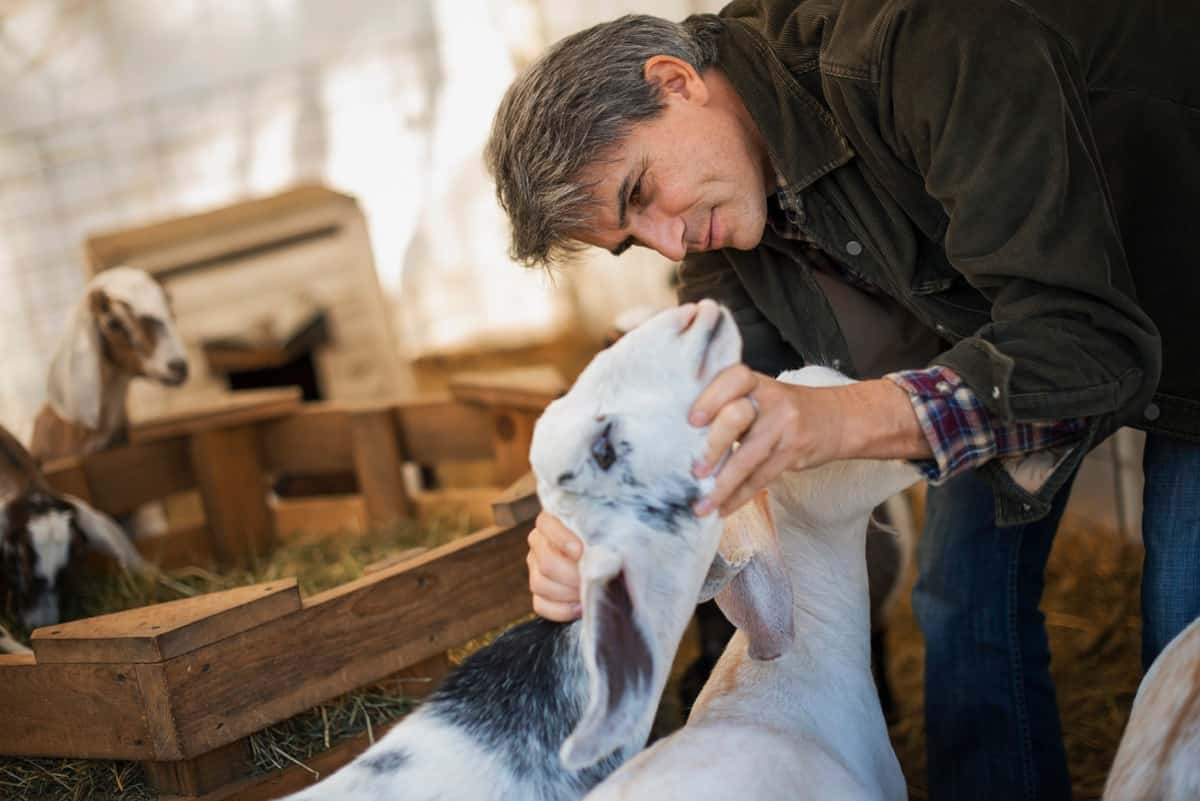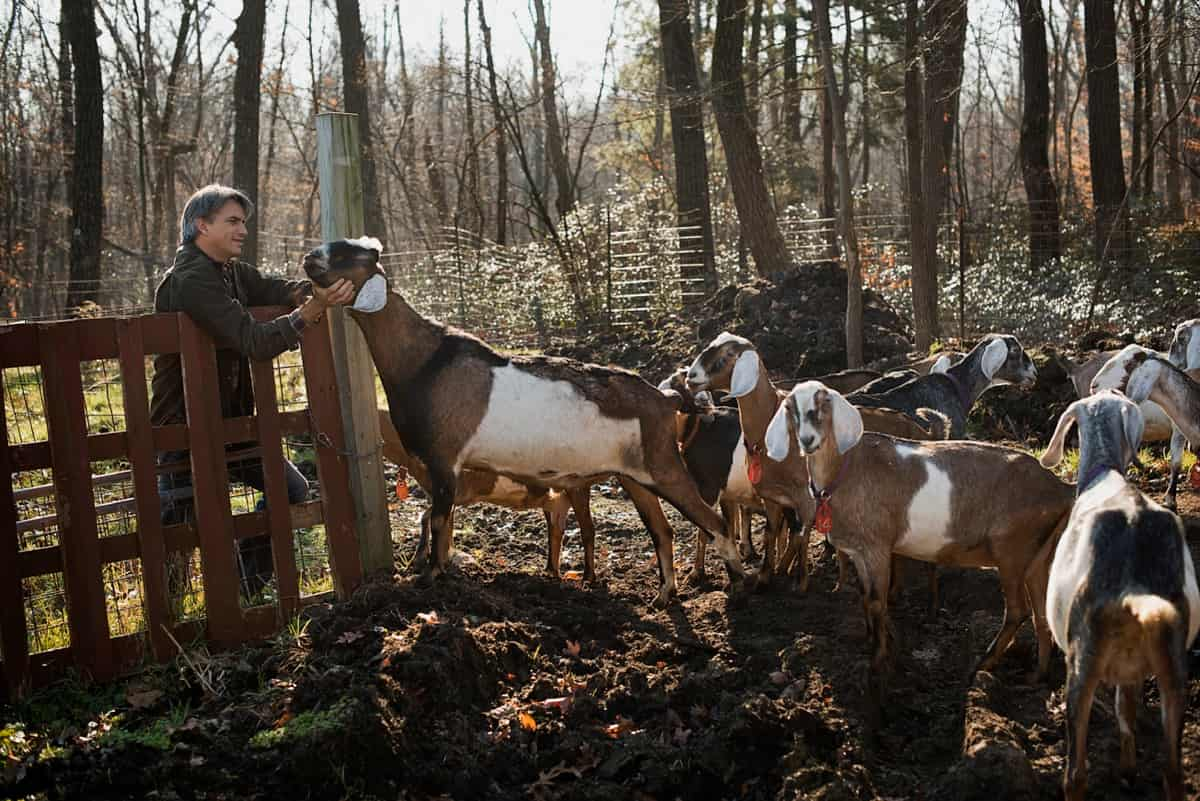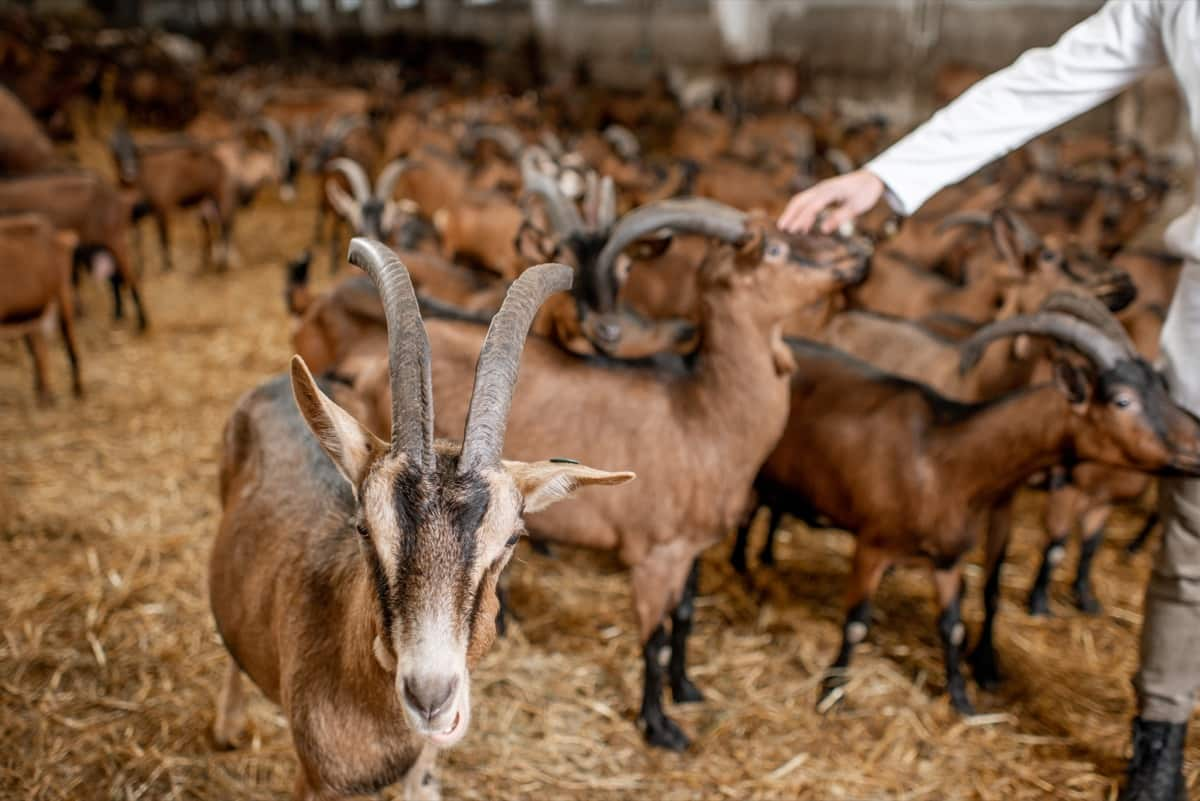Foot Rot is a highly contagious disease affecting goats’ hoofs and underlying tissues. It is an acute or chronic dermatitis that can lead to severe lameness and reduced productivity in the affected animals. Foot Rot is caused by bacterial infection, mainly Dichelobacter nodosus and Fusobacterium necrophorum, which thrive in wet and dirty conditions, making it a significant challenge for goat farmers in areas with high rainfall and poor hygiene.

The disease is highly prevalent in intensive farming systems. It can spread rapidly within a flock, leading to significant economic losses due to reduced milk yield, weight loss, and treatment costs.
Foot Rot Management in Goats
Causes of Foot Rot Disease
Foot Rot disease in goats is primarily caused by two bacteria: Dichelobacter nodosus and Fusobacterium necrophorum. These bacteria are anaerobic, non-spore-forming, gram-negative rods that thrive in moist, dirty environments. When goats come into contact with contaminated soil or manure, the bacteria can enter their hooves and multiply, causing infection and inflammation.
Occurrence of Foot Rot Disease
The occurrence of foot Rot is more common in areas with high humidity, rainfall, and wet ground conditions, as these environments provide ideal conditions for the growth and spread of the bacteria. Overcrowding and poor hygiene practices can also increase the risk of foot Rot in goat herds.
Symptoms of Foot Rot Disease
- Lameness: Lameness is the most common symptom of foot Rot disease in goats. It ranges from mild to severe, depending on the severity of the infection. Goats with foot Rot may be reluctant to walk, stand, or move around, and may spend more time lying down.
- Foul odor: The interdigital region of the affected hoof will have a characteristic foul odor due to necrosis, or tissue death, caused by the infection. This odor is often described as Rotting or putrid.
- Moist interdigital region: The interdigital region may appear swollen, inflamed, and moist, with discharge and pus present. This is a result of the infection causing tissue breakdown and necrosis.
- Anorexia: As the infection progresses, goats may lose their appetite and become anorexic. This can lead to weight loss and decreased production.
- Decreased production: Goats with foot Rot may experience a decrease in milk production, wool quality, or other production metrics due to the physical discomfort and stress caused by the disease.
Disease Cycle of Foot Rot in Goat
- Predisposing factors: Wet and humid conditions, overcrowding, and poor hygiene practices create a favorable environment for the growth and survival of the bacteria that cause foot Rot.
- Infection: The bacteria enter the interdigital skin of the Goat’s hoof and multiply, leading to infection.
- Incubation: The bacteria multiply and develop for 5 to 7 days, when there may be no visible disease symptoms.
- Clinical signs: As the infection progresses, the Goat may exhibit lameness, acute swelling of interdigital tissues, and swelling around the hairline of both hooves. Eventually, the interdigital skin may crack open, revealing necRotic material with a foul odor.
- Spread: The bacteria can spread from infected goats to other animals through direct contact or by contaminating the environment.
- Complications: If left untreated, the infection can progress up the foot, invading deeper structures such as the navicular bone, coffin joint, coffin bone, and tendons, leading to serious infection and possible permanent damage.
In case you missed it: Enterotoxemia Management in Goats: Disease Symptoms, Treatment, Diagnosis, and Prevention

Diagnosis of Foot Rot in Goats
- Clinical signs: As mentioned earlier, foot Rot in goats is characterized by lameness, a foul odor, and a moist interdigital region. These clinical signs can help in diagnosing the disease.
- Isolation of bacteria: The isolation of Dichelobacter nodosus and Fusobacterium necrophorum from the foot lesions can confirm the diagnosis of foot Rot. However, since these organisms are anaerobic, isolation can be tricky. Specialized laboratory techniques are required for the isolation and identification of these bacteria.
- PCR testing: Polymerase Chain Reaction (PCR) testing can be used for the molecular diagnosis of foot Rot in goats. This method involves amplifying DNA from the bacteria in the foot lesion and detecting the presence of specific DNA sequences unique to Dichelobacter nodosus and Fusobacterium necrophorum.
- Serological testing: Serological testing involves the detection of specific antibodies against the bacteria that cause foot Rot in goats. This method can help confirm the diagnosis and monitor the treatment response.
Treatment and Control of Foot Rot Disease
Treatment and control of foot Rot disease in goats typically involve a combination of management practices and medical interventions.
- Hoof trimming: Trimming the affected animals’ hooves can help remove necRotic material and reduce the anaerobic environment that promotes the growth of bacteria causing foot Rot.
- Local antibiotics: Local application of antibiotics to the affected hoof after trimming can help eliminate the bacteria causing the infection. Antibiotics commonly used include oxytetracycline, penicillin, and streptomycin.
- Footbath: Footbaths containing 10% zinc or copper sulfate or 10% formalin can be used to treat and control foot Rot in goats. The footbath solution should be deep enough to immerse the animals’ hooves for 10-15 minutes.
- Hygiene and management: Good hygiene and management practices can help prevent the spread of foot Rot in goats. This includes keeping the barn clean and dry, reducing overcrowding, providing proper ventilation, and avoiding wet and muddy conditions.
- Vaccination: Vaccination against foot Rot can be an effective way to prevent the disease in goats. A vaccine containing killed bacteria or antigens can be administered to goats to stimulate an immune response and pRotect them against foot Rot.
In case you missed it: Contagious Caprine Pleuropneumonia Management in Goats: Symptoms, Treatment, Diagnosis, and Prevention

Conclusion
The disease can be prevented by regular hoof trimming, cleaning, and using bacterins as vaccines. Effective treatment involves trimming the affected hooves and local antibiotic application. Early detection and prompt treatment can help prevent severe complications and production losses. To control the spread of the disease, infected animals should be separated from the herd. Implementing preventive measures and early treatment can minimize the impact of foot Rot on goat production and welfare.
- Types of Fungicides Used in Agriculture
- Common Issues in the Fruit Development Stage of Pomegranate Farming
- Fruit Development Issues in Papaya: Easy Solutions and Treatment
- Soil-Borne Diseases and How to Protect Your Plants
- Practices to Prevent Disease Spread in the Garden
- From Wilted to Thriving: How to Treat Root Rot Naturally in Houseplants
- Natural Remedies to Cure Brown Spots on Fig Tree Leaves
- Natural Solutions for Poinsettia Problems: 100% Effective Remedies
- How to Control Calla Lily Problems: Natural Remedies for Leaf and Flower Problems